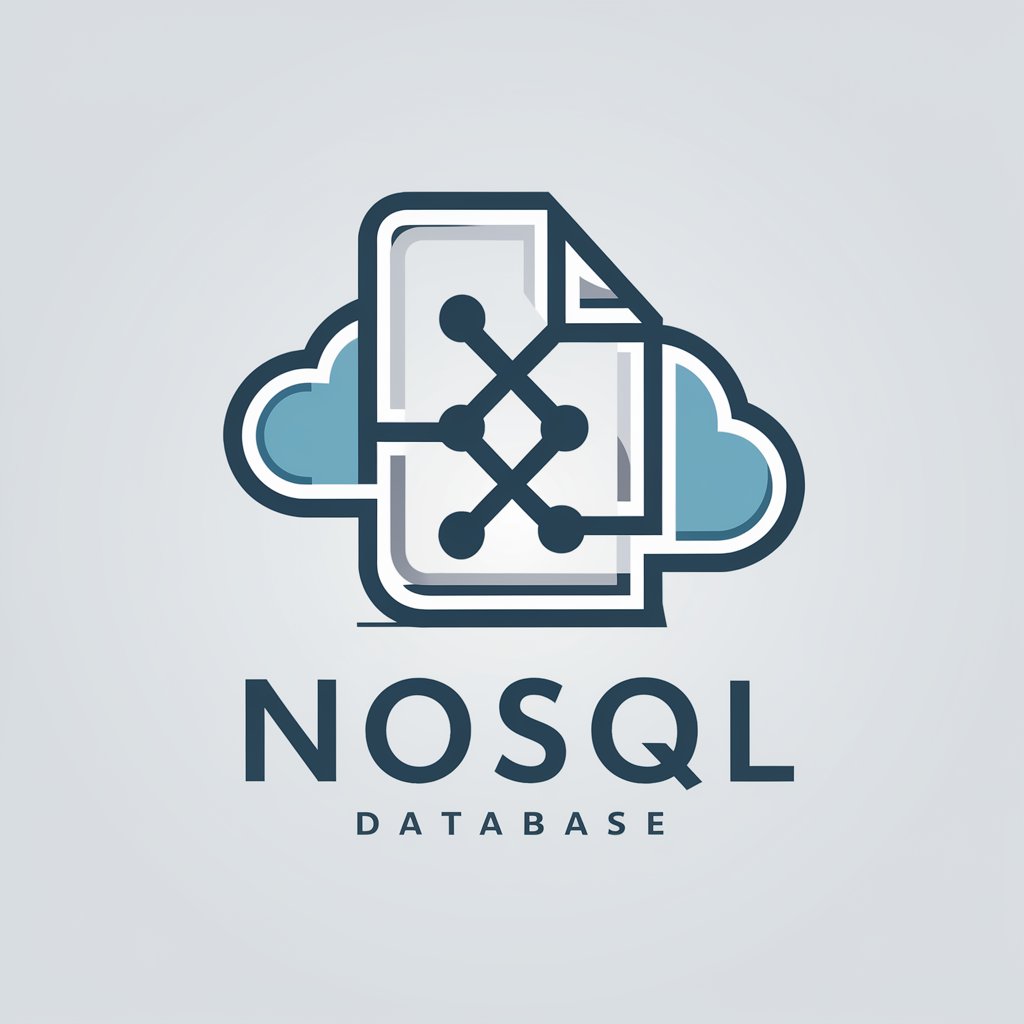NoSQL Database - Flexible NoSQL Databases

Welcome to NoSQL Database solutions. How can I assist you today?
Empowering data, AI-driven insights
How do I structure a NoSQL database for a real-time chat application?
Can you help me write a query to update multiple documents in MongoDB?
What are the best practices for indexing in Firebase?
How can I improve the performance of my NoSQL database for large-scale data?
Get Embed Code
Introduction to NoSQL Databases
NoSQL databases are designed to overcome the limitations of traditional relational databases by offering a more flexible, scalable, and diverse data storage solution. Unlike SQL databases that use a structured query language and have a fixed schema, NoSQL databases support unstructured data, have dynamic schemas, and are designed to scale out using distributed architectures. They are particularly well-suited for handling large volumes of data and high traffic loads, which are common in big data and real-time web applications. Examples of NoSQL databases include MongoDB, a document-oriented database; Cassandra, optimized for high write and read throughput; Redis, a key-value store; and Neo4j, a graph database. Each of these databases is designed for specific data models and access patterns, such as document, key-value, wide-column, and graph, facilitating varied application development scenarios ranging from content management and personalization to social networking and recommendation systems. Powered by ChatGPT-4o。

Main Functions of NoSQL Databases
Scalability
Example
DynamoDB
Scenario
A social media platform uses DynamoDB to manage user posts and interactions. The database scales automatically with the number of users and the amount of data, ensuring high performance during peak usage times.
Flexibility
Example
MongoDB
Scenario
An e-commerce site uses MongoDB to store diverse product catalogs. The flexible document model allows for products with varying attributes without the need for a uniform schema.
High Availability
Example
Cassandra
Scenario
A global streaming service uses Cassandra to ensure that user watchlists and preferences are always accessible, even in the event of server failures, by replicating data across multiple data centers.
Low Latency
Example
Redis
Scenario
An online gaming platform uses Redis as an in-memory data store to maintain player sessions and game states, ensuring quick data retrieval for a seamless gaming experience.
Complex Data Relationships
Example
Neo4j
Scenario
A logistics company uses Neo4j to optimize routing and delivery schedules. The graph database efficiently handles complex queries involving multiple entities and relationships, such as calculating the shortest path between delivery points.
Ideal Users of NoSQL Database Services
Web and Mobile Application Developers
Developers building applications that require flexible data models, rapid development, and the ability to scale easily will find NoSQL databases invaluable for accommodating diverse data types and high user loads.
Data Scientists and Analysts
Professionals dealing with large volumes of unstructured or semi-structured data, such as in big data analytics, can leverage NoSQL databases to store, process, and analyze data more efficiently than traditional relational databases.
Enterprise Architects
For businesses undergoing digital transformation, enterprise architects look to NoSQL databases for their ability to support varied data models, improve scalability, and enhance performance across distributed systems.
System Administrators and DevOps
System administrators and DevOps teams responsible for managing database infrastructure will appreciate the high availability, fault tolerance, and operational simplicity of NoSQL databases, especially in cloud-native environments.

How to Use NoSQL Database
Start Your Journey
Initiate your NoSQL exploration by signing up for a free trial at a leading platform without any login requirements, mirroring the convenience offered at yeschat.ai.
Choose Your NoSQL Type
Decide on the type of NoSQL database you need (e.g., document, key-value, wide-column, or graph) based on your project's requirements.
Design Your Data Model
Carefully plan your database schema or data model. Unlike SQL databases, NoSQL allows for more flexible schemas, so consider how your data will be accessed and updated.
Implement Best Practices
Adopt best practices for NoSQL usage, such as using indexes efficiently, understanding the database's consistency model, and planning for scalability.
Monitor and Optimize
Regularly monitor your NoSQL database's performance. Utilize built-in tools to analyze and optimize queries, storage, and indexing for better efficiency.
Try other advanced and practical GPTs
C# Expert and run code
AI-powered C# coding and debugging assistant

AdamsArt Cubism
Transform Images into Cubist Artwork with AI

PromoExpert
Elevating PromoStandards with AI

Herbal Advisor
Empowering herbal knowledge with AI

The Ultimate Choose Your Own Adventure
Shape Your Own Destiny with AI

AI in Brief
Condense AI News into Actionable Insights

Environmental Marketing Co-Pilot
Powering Sustainable Marketing Claims

Chart Analysis Expert
Empower your investments with AI-driven analysis.

WordpressGPT
Simplifying WordPress with AI

10 Amazing Facts About
Unleashing Knowledge with AI Power

TalkWithHer – Female Friend, Not Girlfriend
Your AI-powered empathetic friend

Marketing full skill
Elevate Your Marketing Game with AI-Powered Insights

NoSQL Database Q&A
What are the main advantages of using a NoSQL database?
NoSQL databases offer high scalability, flexibility in handling unstructured data, and high performance for specific types of queries and operations, making them ideal for big data and real-time web applications.
How do I choose the right NoSQL database for my project?
Consider your project's data structure, the size and type of your data, scalability needs, and the specific queries you'll run. Research and compare the features of document, key-value, wide-column, and graph databases to find the best fit.
Can NoSQL databases handle relationships like SQL databases?
While NoSQL databases are not inherently relational, many can effectively model relationships. Document and graph databases, in particular, are adept at handling complex relationships and nested data structures.
How do I ensure data consistency in NoSQL databases?
Data consistency in NoSQL databases can be managed through strategies like eventual consistency, strong consistency, or a hybrid approach, depending on the database's architecture and the application's requirements.
What are some best practices for data modeling in NoSQL?
Best practices include understanding your access patterns, taking advantage of the database's flexibility to denormalize data, using aggregation frameworks when available, and considering the implications of your design on scalability and performance.
